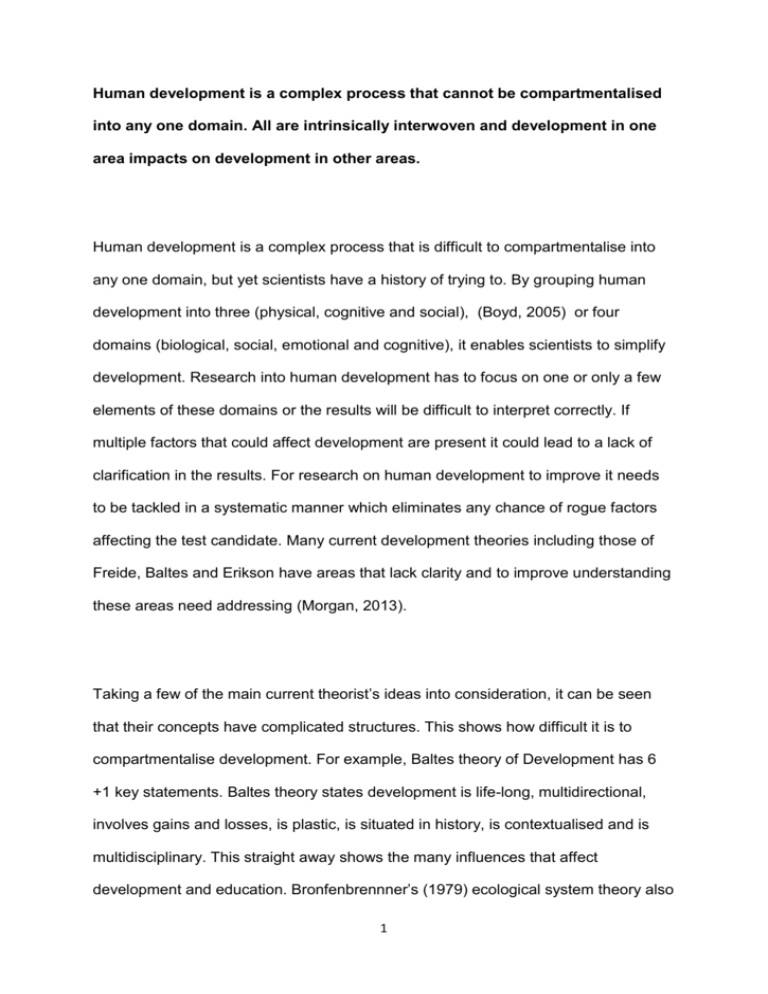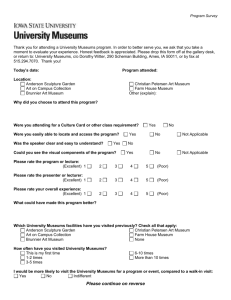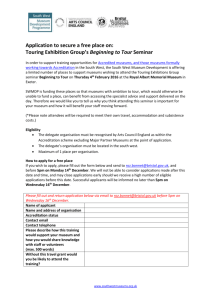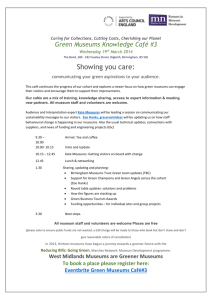here - WordPress.com
advertisement

Human development is a complex process that cannot be compartmentalised into any one domain. All are intrinsically interwoven and development in one area impacts on development in other areas. Human development is a complex process that is difficult to compartmentalise into any one domain, but yet scientists have a history of trying to. By grouping human development into three (physical, cognitive and social), (Boyd, 2005) or four domains (biological, social, emotional and cognitive), it enables scientists to simplify development. Research into human development has to focus on one or only a few elements of these domains or the results will be difficult to interpret correctly. If multiple factors that could affect development are present it could lead to a lack of clarification in the results. For research on human development to improve it needs to be tackled in a systematic manner which eliminates any chance of rogue factors affecting the test candidate. Many current development theories including those of Freide, Baltes and Erikson have areas that lack clarity and to improve understanding these areas need addressing (Morgan, 2013). Taking a few of the main current theorist’s ideas into consideration, it can be seen that their concepts have complicated structures. This shows how difficult it is to compartmentalise development. For example, Baltes theory of Development has 6 +1 key statements. Baltes theory states development is life-long, multidirectional, involves gains and losses, is plastic, is situated in history, is contextualised and is multidisciplinary. This straight away shows the many influences that affect development and education. Bronfenbrennner’s (1979) ecological system theory also 1 shows complexity in its main levels, especially the interactions in the mesosystem (Lemme, 2006). To be able to discuss the complexity and whether human development can be compartmentalised, the context of adult learning (age 20 to 30 years) in a museum setting is being used. Today’s museums use education theory to stimulate their visitors, and adults are no exception to the rule. Dewey’s theory on experimental learning is seen in many museums (for example, the Cucci tunnels museum, Vietnam). Museums often focus on social, individual and physical stimuli to produce a thought provoking environment. This emphasises how current development theory interacts over several domains. Dewey believed that physical stimuli and mental processing on that stimuli interacted and produced the learning experiences which are promoted by good museums. Dewey also thought educational experience is active, but the value of an experience is derived from the mental process of interpretation and development of meaning in the experience (Monk, 2013). One interpretation of this is that, the experience alone was not enough. The experience combined with an individual’s mental thought process will produce a desired learning experience. Quite what the individual learns from the experience depends on previous acquired knowledge. On one hand Dewey’s theories show the complexity of human development and how intrinsically interwoven the domains are. On the other hand research into human development needs to be simple enough to eliminate any external factors which could affect the results. There have been many models used to discover more in the field of human development and two of these are the Mechanistic Model and the Organismic Model. Scientists using the Mechanistic Model believe humans are similar to machines. Their components can be studied 2 individually and the results will not be affected by the interaction of other components. This type of study is often used when psychometric testing on intelligence is carried out. A scientist working with an Organismic model believes that the sum of the whole is greater than the individual piece. They believe that separate parts cannot be studied alone as they work in conjunction with other parts and separate study would yield false results (Cavanaugh, 1997). In the museum environment, displays and exhibits prompt interest in adult learners depending on previous education experiences and social/cultural back grounds. The curator needs to provide a stimulating education facility for a variable knowledge of background in adults (Monk, 2013). Freire stated that ‘These exhibits can serve as instruments to arouse epistemological curiosity, . . . The process would therefore be one that is not static but dynamic, in the classic Freirean and critical pedagogical sense’ (Borg & Mayo, 2010 p41 in Monk, 2013). Freire was appearing to imply that there was a large scope of education visible at this particular museum, which complemented his theory and the discipline of teaching. Again here it can be seen that cognitive development is not standing on its own. It has been influenced by past social, cultural and emotional influences. One adult could have a completely different outcome of educational experience from a museum visit from another adult as their previous life experiences have led them to interpret the exhibition differently. With regards to adult learning and aging it can be seen from studies that adults who have maintain high levels in all their human development domains have a stronger cognitive ability. Research carried out by Princeton University in 1999, suggested 3 that young neutrons of primates are able to change depending on the stimuli provided. These adaptive neurons enhance the primates learning ability in adult life which again suggests that exposure to different types of stimuli aids further learning (Lemme, 2006). This is another example of the interwoven domains of Human Development. Vygotsky believed human development was intertwined with environment. He postulated that not only the environment effects human development but human development also affected the environment. With this in mind he found it very difficult to study human development and when Pavlov had his works published around 1921, Vygotsky was excited that there may be a way to study development with a single disciple approach. Pavlov believed in the ‘conditioning reflex’(Daniels, Cole and Wertsch, 2007) would allow the study of the human mind in the context of one discipline to be possible. Vygotsky made many references, at first, to Pavlov’s work. In time he decided that an animal’s response to a particular environmental factor may provide information on the process of the brain of many mammals, but humans were different. Humans could create their own artificial stimuli which provided new and different signals and this difference in a humans ability left Pavlov’s theory failing in the context of human development. Thus the idea of a single factor in human development being available to be studied on its own has again been shown to be unrealistic (Daniels, Cole and Wertsch, 2007). The role of museums has changed over history. In the 19th century the main purpose of museums was for educating the population, while by 1920’s museum were used 4 as merely collections of artefacts. Recent studies have again shed light on the importance in adult education of museums (Monk, 2013). ‘It was argued that a growing awareness of the need for collaboration with and utilizing museums for adult education was emerging, and that greater opportunities for collaboration between educational and cultural agents should be created' (Chadwick & Stannett, 2000, p. 1) in (Taylor et al., 2008). Adult education in practise is self-motivated education as the individual chooses to improve themselves. This makes adult education multidirectional which could therefore be taught in a formative or non formative environment. The museum environment offers both these styles of learning by enabling the adult individual to choose (consciously or sub-consciously) the style which fits with their prior life experiences .There is no "one size fits all" approach to adult education (Jackson, 2009) and the museum experience with its multi theory education concepts is open to the majority of adult learners. In conclusion, current educational theory can be seen in current practise in the education departments of good museums. Having a wide range of ideas and employing education theory in museums makes them the perfect platform for adult learning. All learners translate information depending on prior knowledge and this is even more relevant to the adult learner for they have more life experience under their belts. The age group of 20- 30 years has a lot of factors which will affect cognitive development, including social, emotional, cultural and physical needs. These factors need to be balanced to produce the ideal learning environment. Theories of human development and how it links to education can be seen to desire a research technique to separate development domains. In reality scientists are still searching for the perfect way to study a complex and interwoven subject which is unlikely to be 5 simplified, due to its complicated relationships linking all its domains. Mechanistic Models of human development point to the possibility of a way of separating learning domains but once these theories are taken out of the laboratory context, it has been seen that the results differ, for example Pavlov’s theory on classical conditioning (Daniels, Cole and Wertsch, 2007). This has left scientists baffled as to how to tackle such an intrinsically interwoven discipline and where we should look next. This could explain why education and development specialists still turn to the likes of Baltes, Vygotsky, Dewey and Erikson to explain current educational ideas, while other disciplines use more ‘current’ theories to explain new developments. Words 1477 References Borg, C. & Mayo, P. (2010) Museums: Adult Education as Cultural Politics, New Directions for Adult and Continuing Education 2010 (127): 35–44 [Accessed: 2 January 2014] Boyd, D.R. (2005) Lifespan Development, Boston, Mass: Pearson/A and B Cavanaugh, J.C. (1997) Adult Development and Aging, Pacific Grove: Brooks/Cole Pub. Co Daniels, H., Cole, M. & Wertsch, J.V. (2007) The Cambridge Companion to Vygotsky, Cambridge ; New York: Cambridge University Press 6 Jackson, L.D. (2009) Revisiting Adult Learning Theory through the Lens of an Adult Learner, Adult Learning 20 (3/4): 20–22 [Accessed: 16 December 2013] Lemme, B.H. (2006) Development in Adulthood, Boston: Pearson/A&B Monk, D.F. (2013) John Dewey and Adult Learning in Museums, Adult Learning 24 (2): 63–71 [Accessed: 16 December 2013] Morgan, T. (2013)Theories of Development. [Lecture to BA ES Year 1], ES4009: Human Development. University of Gloucestershire. 10 October. Taylor, E.W., Neill, A.C. & Banz, R. (2008) Teaching in Situ: Nonformal Museum Education, Canadian Journal for the Study of Adult Education 21 (1): 19–36 [Accessed: 22 December 2013] 7





